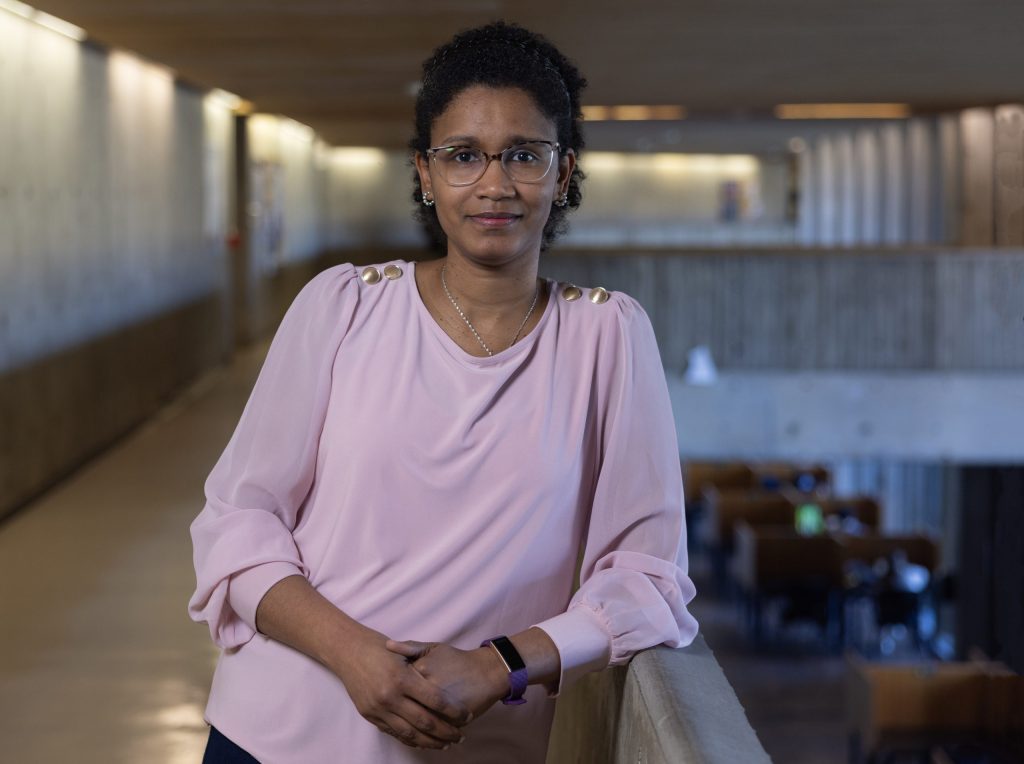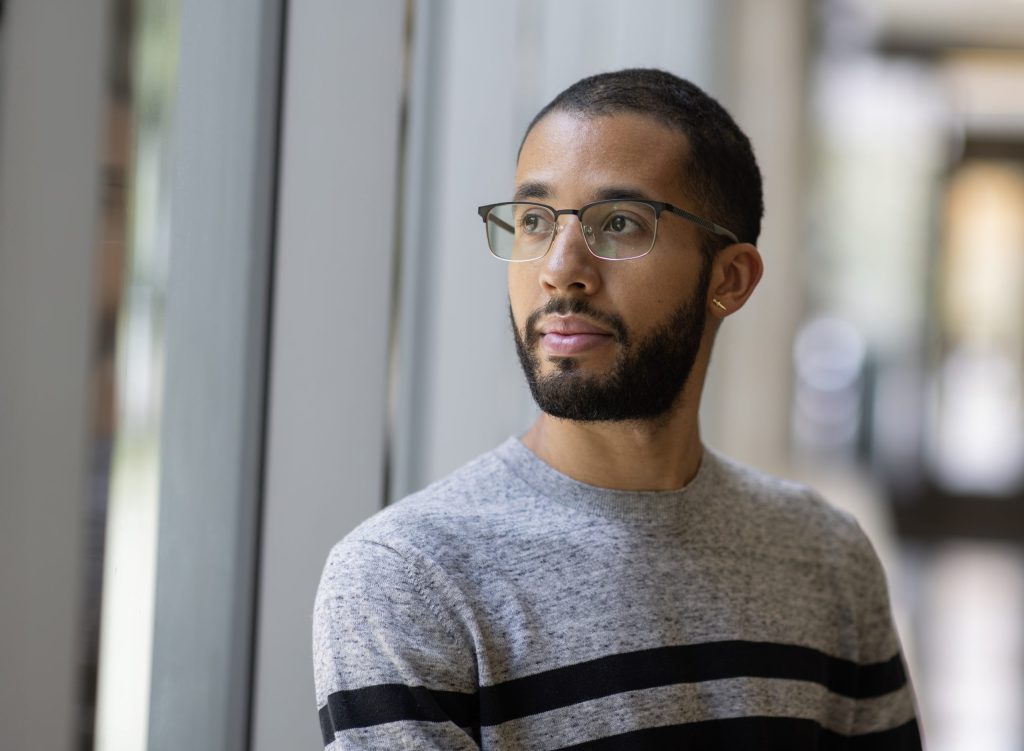‘Silent epidemic’: Young researchers receive CIHR awards to investigate coronaviruses and chlamydia

Safia Omer (pictured) and Jonathan Burnie are among the first winners of the CIHR REDI Early Career Transition Award, a new federal grant (photos by Don Campbell).
This article originally appeared on University of Toronto Scarborough News by Alexa Battler.
Coronaviruses and chlamydia are quietly spreading across Canada, and two young researchers are launching projects to shed light on the biology behind these epidemics.
The researchers are among the first recipients of the CIHR REDI Early Career Transition Award, a federal grant intended to help up-and-coming health researchers and clinicians overcome the barriers from racism and sexism as they launch their careers. The award’s inaugural edition was open only to racialized women and people who identify as Black, and will focus on a different underrepresented community each year.
Safia Omer, a postdoctoral scholar at U of T Scarborough, is using the award to investigate an insidious illness. Chlamydia is the second-most common sexually transmitted infection in the world and the most common in Canada.
“This is a silent epidemic,” she says.
Her goal is to understand how chlamydia manipulates cells to cause disease, and how it spreads by using dynein, a molecular motor responsible for moving parts of the cells and propelling hundreds of other activities within it. With these insights, she says scientists can better identify treatments, clinical approaches and therapeutic targets.
“This is very transferable knowledge, because even different viruses like HIV and HPV use similar kinds of mechanisms to move within the cells and thus facilitate their survival and spread,” Omer says.
Omer has spent the last several years studying dynein regulation, first in yeast at the University of Massachusetts, then in mammal immune cells at U of T. Now, she wants to create as detailed a picture as possible of how chlamydia hijacks dynein’s mechanisms, usually integral to cell health, to spread the infection. She’ll also focus on figuring out which other proteins and bacterial factors help chlamydia move during the early and late stages of infection.
Chlamydia infiltrates the body while enclosed in a large membrane, using dynein to get to the centre of the cell. The bacteria disrupts normal cell division and results in cells with multiple nuclei, an abnormality linked to tumor development. Omer also notes that when chlamydia is treated, these abnormal cells with too many chromosomes have the potential to become cancerous. Her findings reinforce the importance of regular screenings for cervical cancer even after chlamydia is treated.
“The day I found out that Safia received this award was the best day of my career,” says Rene Harrison, who helped Omer with the rigorous award application, and is a professor in the Department of Biological Sciences and vice-dean of graduate and postdoctoral studies at U of T Scarborough. “Safia has faced relentless challenges in her studies and home in Sudan and was long overdue in being rewarded for her accomplishments.”
Omer finished her undergrad and master’s in her home country of Sudan, and her family is among the five million people displaced by a war that broke out last April. The conflict is ever-present in her mind, as are the thousands of Sudanese researchers whose work has been disrupted, and the children who’ve been out of school for months.
“This erupted conflict is the result of injustice, corruption and severe mismanagement of Sudan for the last 50 years,” she says. “Unfortunately, there is not much international recognition, and this is something that needs immediate attention.”


Preemptively finding ‘universal’ coronavirus vaccines
Meanwhile, Jonathan Burnie (HBSc 2018, PhD 2023 UTSC) is using the award to bridge a potentially disastrous knowledge gap: the strain of coronavirus that stopped the world — SARS-CoV-2 — is now well understood, but the litany of other common coronavirus strains are not.
Coronaviruses cause up to 30 per cent of common colds each year and largely go away without treatment, yet known strains can cause fatal pulmonary infections and unidentified ones can be harboured in bats, including those that could spread to humans. During the pandemic, Burnie saw how quickly scientists could create vaccines once they had a thorough understanding of SARS-CoV-2’s biology, and says that’s why now is the time to pre-emptively get that same baseline knowledge on the gamut of coronaviruses lurking around the world.
“I hope that by generating a better understanding of this virus family, we can work towards developing universal vaccines effective against all coronaviruses,” says Burnie, who completed his PhD in the Guzzo Lab and is now a postdoctoral fellow in the Corbett Lab at the Harvard T.H. Chan School of Public Health.
Burnie’s project will identify which monoclonal antibodies (mAbs) — the lab-created antibodies at the core of vaccines — best neutralize endemic coronaviruses, and test the hypothesis that combining two or more mAbs makes for a more effective treatment.
To make vaccines, scientists need to know how a virus attaches itself to healthy cells with spike proteins. While investigating HIV spike proteins for his PhD, Burnie found he got different results depending on which experimental technique he used, though they were all common approaches to studying viruses. He’ll continue exploring how mAbs interact with spike proteins to figure out the tools and approaches best used to study endemic coronaviruses and other viruses.
